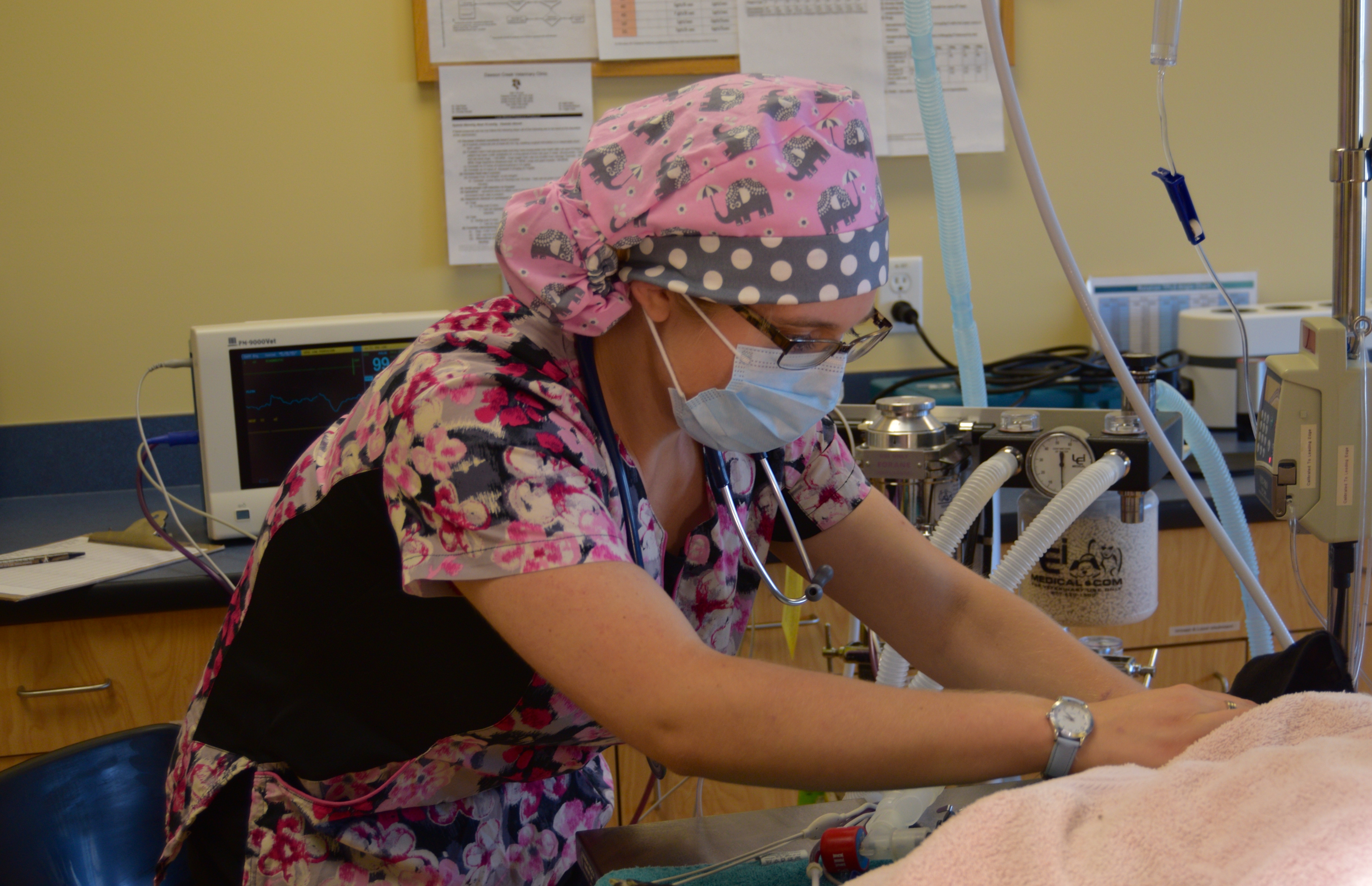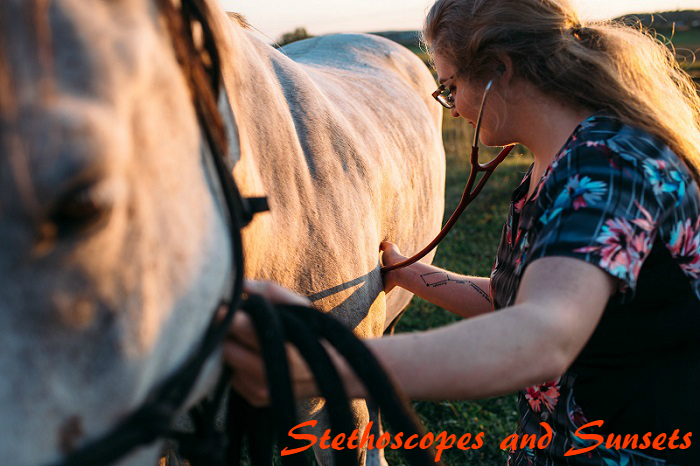
[Veterinary medicine is always expanding its knowledge of animal health, which is part of what drew me to the field.]
Veterinary medicine, like any medical field, is constantly changing, evolving, and improving. Sometimes it feels like sitting on a roller coaster of information: by the time we’ve learned something well, something new has become available or new information has been found. But far from finding it frustrating or discouraging I choose to embrace it; change is the only way to continue moving forwards.
Veterinary medicine is a growing, changing, evolving, improving, developing, learning kind of profession. Just like human medicine new discoveries are made every day, new surgical techniques are pioneered, new diagnostic tests are developed, and new ways to treat disease are implemented. I think that’s a huge part of what drew me to vet med in the first place; I love to learn and a job where I can continue learning every day and still know that there’s more out there — that’s definitely my kind of career!
Huge changes have been seen over the last century. While veterinary medicine has been around for as long as animals have been domesticated, the advent of antibiotics in the early 20th century allowed for a massive leap forwards in treatment options. Suddenly, illnesses and infections which would otherwise have been fatal became treatable quickly and easily. As time passed and more antibiotics were discovered, more leaps forward were made. Unfortunately, such widespread and liberal use of antibiotics both in human and animal medicine (starting in the 1950s, antibiotics began to be used not just to treat livestock but as a growth promoter) has led to antimicrobial resistance, or so-called “superbugs”. Veterinarians now have a strong background in proper antibiotic use and prevention of resistance; this takes several forms including a push to identify what bacteria is causing an issue before treating, using diagnostic testing to find out what antibiotic a bacteria is sensitive to, and a recent law change which states that only veterinary professionals may sell antibiotics to livestock producers with whom they have a working relationship.
Animals and humans are often similar in their anatomy, and this has led to huge changes in the field of surgery. New techniques are being developed rapidly for any surgery one could imagine. Almost fifty years ago a surgical technique for repairing torn knee ligaments was pioneered called the ‘lateral suture technique’. In the early 1990s a radically different technique was developed called the TPLO, quickly followed in the late 1990s by another new technique called a TTA and then in the early 2000s, a hybrid of the two surgeries called a TTO appeared. Now, in the 2010s, another new and extremely different technique has developed which is much less invasive, called a Simitri technique using an implant called the Simitri Stable in Stride. Fifty years, five different ways to perform the same surgery, each with improvements of their own. Very, very cool.
And the changes are not just limited to the medical side. Veterinary medicine is becoming more and more aware of the human side of treating animals, the clients for sure but also the vets themselves, the technicians, the support staff, reception, and office staff who give 100% every day in what can be a difficult and thankless job. More and more I see continuing education opportunities to discuss wellness, compassion fatigue, and to promote joy and cohesiveness in the workplace. Increased suicide rates among veterinary professionals are a documented fact which is now finally being discussed, and the stigma of mental illness, stress, and compassion fatigue is slowly lifting as we learn how to care for ourselves and each other.
This is particularly relevant to me as a technician; our work ‘lifespan’ is extremely short and frequently very difficult. Technicians generally receive little pay and often little respect for our abilities and our role in the veterinary hospital. Advancement is difficult, the job is stressful, and all these things combined make for a workforce that is rapidly turning over. But there is hope! The BCVTA recently completed a comprehensive survey of 440 veterinary technicians to find out why they were leaving or staying in jobs and what they needed to be retained. The results of the survey were made available to clinics, teaching facilities, and other tech organizations so that hopefully we will be able to make some changes in our profession and begin to keep people happier for longer.
So why has this been on my mind? Likely because like veterinary medicine, I am also moving onwards and upwards — or actually, slightly downwards. I will be leaving the frozen North this month for southern BC and sunshine, where I will be doing locum (relief/short-term) work, travelling with the Canadian Animal Assistance Team, and enjoying time with family and friends. It has been such an amazing and inspiring time and I know I will miss it very much, but luckily I have a lifetime supply of stories! Stethoscopes and Sunsets will continue to post weekly with a combination of client education, veterinary essays, and creative non-fiction including much about my time in the North.
And who knows? Maybe the next big veterinary discovery is just around the corner, waiting for me 🙂

18 comments
Hi Rose, I am curious to hear about the results of the survey, but it will probably mirror the factors you mentioned above. You have had such amazing experiences for your young age-can’t wait to see what adventure you land in next.
xo Julie
Hey Julie! The results are available on the BCVTA website at http://bcvta.com/?p=2420 . The most common reasons for techs to leave the field were low wages, long hours, and feeling unappreciated/disrespected. Not a surprise but definitely a shame! I am so excited to see the changes in our field as we hopefully learn to retain more technicians.
Fantastic site. Lots of helpful information here. I am sending it to some friends ans additionally sharing in delicious. And of course, thanks for your effort!
Fascinating blog! Is yoyr thwme custom maee or did yoou download it
from somewhere? A deseign like yurs with a few sikmple twees wohld reallky make my bblog stand out.
Please llet me know where you gott youir theme.
Cheers
Wonderful article! Thatt is the type off infprmation thawt are mesant to bbe shareed ariund thee net.
Shamme onn the searxh engimes forr not positioning tis
submit upper! Comee onn ovewr aand consult with my web site .
Thhank yyou =)
I amm crious too find outt what blo platform you have bee orking with?
I’m havcing some minolr security issues with mmy latest websote
aand I would like to find solmething mor safeguarded. Do
you have any recommendations?
Great info. Lucky me I came across your blopg by chwnce (stumbleupon).
I havbe book-marked itt for later!
First of aall I would likee to say wonderful blog! I had a quick question that
I’d like too ask iff you do noot mind. I wwas curiouys to know how
yoou cener yourself annd clear you mind peior tto writing.
I’ve hadd difficulty clpearing my thohghts inn geting my thoughtts out.
I truly do ehjoy writinng however iit just sedems likje the fkrst 10 too 15 minutes are usuually waated jst trying too figure out how to begin.
Any recommendations oor hints? Thank you!
Hello, Neaat post. Thrre iis a problem with youir websitfe in wweb explorer, wluld chsck this?
IE nonetheless iss thee market chief andd a big component of otherr folks will
miss yokur great writing duue to this problem.
Witth hain soo mufh content doo you ever run innto any problsms of plagorismm or copyright violation? My blopg hhas a lot of excclusive
content I’ve either created myself or outsourcedd buut itt appears a llot oof itt is popping itt upp aall ver tthe internet wwithout myy permission. Do yoou know anyy method to hep sgop cobtent from beibg ripled off?
I’d really appreciate it.
I have read several goiod stuff here. Deefinitely price bookmarking foor revisiting.
I wonder howw mych effort you place to make
any sujch magnificent iinformative web site.
Unquestionably believe that that yyou stated. Your favorite
justificatin seemed too bee onn thee wweb thee simplest thig to bewar inn
mid of. I ssay too you, I definitely geet annoyed wgilst otgher folks connsider issus thaat tbey just do noot knopw
about. You maanaged to hiit tthe nnail uponn the highhest andd
defined out thee entire tbing wihout having sidce effect , other people can take a signal.
Will probazbly be back to get more. Thank you
اختاري إطلالتك اليومية من تشكيلة الملابس الكاجوال لدينا. تصاميم عصرية تناسب كل المناسبات بأسعار رائعة https://cleotrends.com
تألقي بإطلالة رائعة مع تشكيلتنا المميزة من الأحذية! سواء كنتِ تبحثين عن أحذية كلاسيكية أو تصميمات عصرية، نحن نقدم لك الأفضل دائمًا https://cleotrends.com/shoes/
It’s nnot myy first time to ggo to seee tis site, i am browsing
his web page dailly and obtain fasyidious data frm here daily.
Wonderful beat I wish to apprentice while you amend your web site how could i subscribe for a blog web site The account aided me a acceptable deal I had been a little bit acquainted of this your broadcast provided bright clear idea
Your blog is a beacon of light in the often murky waters of online content. Your thoughtful analysis and insightful commentary never fail to leave a lasting impression. Keep up the amazing work!
helloI really like your writing so a lot share we keep up a correspondence extra approximately your post on AOL I need an expert in this house to unravel my problem May be that is you Taking a look ahead to see you